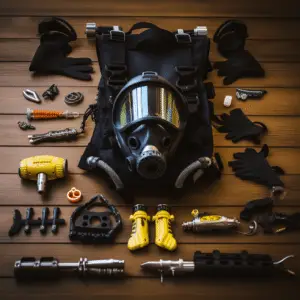Though a lot of people know about scuba and what scuba diving is, not a lot of people know what SCUBA even stands for. A lot of people also don’t know that SCUBA is an abbreviation for anything at all.
SCUBA actually stands for Self-contained Underwater Breathing Apparatus, which may seem a bit confusing to you is surely the main focus of SCUBA is the actual action and not the equipment. The activity’s acronym was created in 1954 by Dr. Christian Lambertsen.
Lambertsen designed respirators for the military but found they might be used elsewhere.SCUBA is actually the military code name for the reliable scuba regulators and masks used. This name just remained popular among the general public and has since been referred to as so.
Equipment

The fact that scuba diving is named after its gear shows its importance. The first code name was for specific equipment, but scuba has expanded to include more gear.
What does scuba gear consist of:
Wetsuits
You really can’t have a diving experience without the use of a wetsuit. Though a wetsuit doesn’t really protect you from issues such as low oxygen or poor ventilation, a wet suit does protect you against the harsh pressures of the water. As humans, we lack the blubber that a lot of sea life has to keep them warm in the water, because of this when submerged to such depths it is easy for us to get cold. Wetsuits help to insulate the body and keep the scuba diver warm, even at the lowest depths. Not only this, but wetsuits can be a protective layer between any potential scratches and nips that could occur underwater. However, not a lot of people know what to wear under a wetsuit. It is recommended that you just wear any normal swimsuit, as extra lawyers will just make the wetsuit uncomfortable.
Masks
Scuba masks are essential. They give divers a clean view ahead and an essential air pocket. This air pocket assists with underwater sight and offers an enclosed space around the nose to prevent mask squeeze and equalize.
Buoyancy devices
Neutral buoyancy is crucial to scuba diving. This helps them float and manage their underwater swimming. Ascending back to the surface requires buoyancy because deeper water uses more oxygen.

